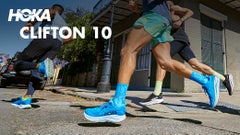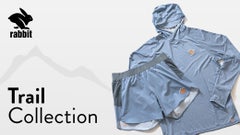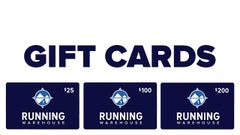Energy Gels Explained
Updated: October 1, 2024 by Caroline Cross
Energy gels have become a staple for runners and endurance athletes seeking a convenient and effective way to sustain their energy levels during long-distance races and intense training sessions. In this article, we will delve into how energy gels work, offer tips on training your body to use them effectively, and break down the most common ingredients to help you better understand how they can help you run stronger and longer.

How Energy Gels Work
- Rapid Energy Supply: Energy gels primarily contain carbohydrates in the form of sugars, such as maltodextrin, fructose, or glucose. These carbohydrates are rapidly absorbed into the bloodstream, providing a quick source of energy to fuel your muscles.
- Electrolyte Balance: Many energy gels also include electrolytes like sodium and potassium, which help maintain the body's electrolyte balance. These electrolytes are crucial for preventing muscle cramps and maintaining overall hydration during prolonged exercise.
- Avoiding the Bonk: During long runs or races, athletes often experience a condition known as "hitting the wall" or "bonking." This occurs when glycogen stores are depleted, leading to a sudden drop in energy levels. Energy gels can help prevent this by replenishing carbohydrates, delaying the onset of fatigue.

Training Your Body to Use Gels
- Experiment in Training: Don't wait until race day to try energy gels. Experiment with different brands and flavors during your training runs to find the ones that work best for you.
- Timing Matters: Determine the optimal timing for consuming gels based on your body's needs. Generally, consuming an energy gel every 30 to 45 minutes during long runs is a good starting point. Adjust the frequency as needed.
- Hydration is Key: Energy gels work best when consumed with water. Make sure to stay adequately hydrated during your runs to accelerate the absorption of carbohydrates and maintain electrolyte balance.
- Avoid Overconsumption: While energy gels are beneficial, consuming too many can lead to gastrointestinal issues. Stick to a reasonable intake and pay attention to your body's signals.
Common Ingredients & What They Do
Amino Acids
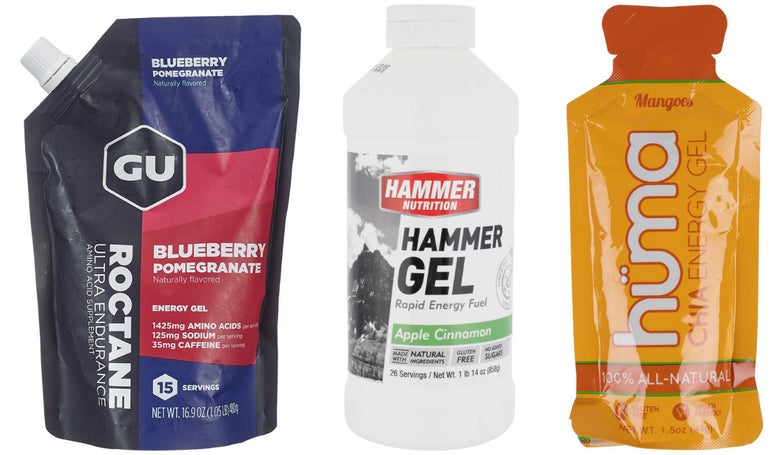
Amino acids are the "building blocks" of proteins, and they play several essential roles in the body. There is a lot to be said for each type of amino acid, but we are keeping it simple here today.
Let's start with the basics. Leucine, isoleucine, taurine, and valine are the most common amino acids you will see in exercise nutrition. Sometimes the exact name of the amino acid is written on the nutrition label, and other times it will just say "amino acids." You will find amino acids mostly in gels intended for ultra-endurance (4 or 5+ hours) or ultra-strenuous activities, because that's where they are most beneficial.
Why are amino acids used in some energy gels?
As you run for an extended period of time (over 4 hours), your body starts to break down muscle protein to use as fuel so you can keep moving. Some research suggests that if you eat amino acids during a super long or very strenuous run (think a marathon or hot-weather race), replacing some of these amino acids might diminish the amount of muscle protein broken down by your body during your run. Now, keep in mind that the jury is still out on this research, but anecdotal evidence is in favor of these findings.
What do amino acids do for your run?
The main reason amino acids are included in some gels is that they can do two things: keep you from fatiguing as quickly during long runs and help you recover a little faster after your run. Whenever you exercise for several hours, your brain gets fuzzy, and you may feel sleepy. Adding a small number of amino acids to your fueling strategy may help prevent this grogginess. It may also help you recover faster when you are finished with your training so that you can feel better the following day. Specifically, leucine, valine, and isoleucine may help reduce mental fatigue and muscle damage, while taurine can help maintain performance and positive brain function.
Maltodextrin
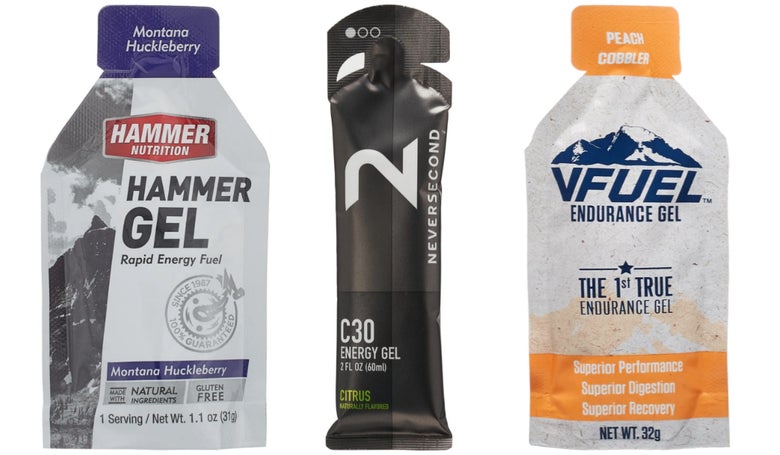
Maltodextrin is a flavorless (or slightly sweet) carbohydrate made from starch, and in the US, it is usually derived from corn. It is essentially a chain of glucose molecules. Glucose is a type of sugar that is easy for your body to burn, and in fact, it is virtually the only fuel used by your brain. This means that maltodextrin is very easy for your body and brain to use as well.
Why is maltodextrin used in energy gels?
Your body needs carbohydrates to function; they are like the fuel in the gas tank of your car — without it, you're empty and depleted. For most people, the body will burn carbs until they are no longer available and then switch to burning fat. This can cause a lag in energy, leading to an uncomfortable run. Eating carbohydrates earlier during your long run will allow the body to start burning fat earlier, making the transition from burning carbs to burning fat much less painful and tiresome.
Since maltodextrin is a chain of easily digested glucose molecules, it will result in a slightly slower release of energy versus simply eating a spoonful of straight glucose. Maltodextrin is also practically flavorless, making it a good choice for exercise nutrition products. Energy gels that include maltodextrin might taste a little less sweet than gels that don't contain it.
What does maltodextrin do for your run?
Maltodextrin provides you with a steady release of energy so your body can begin to break down fat to use as fuel. This essentially helps you avoid "bonking" or "hitting the wall" during your extended run.
Fructose

Fructose is a simple carbohydrate made of a single sugar molecule, found naturally in honey, fruit, and many vegetables. Sometimes it is called fruit sugar because it's what makes fruit sweet. Fructose is absorbed directly into the intestine, meaning you reap the benefits of the energy very quickly. It also helps deliver quick and easily digested energy to your working muscles.
Why is fructose used in energy gels?
Many energy gel companies use fructose to deliver a quick burst of energy to your working muscles when you consume a gel. Some studies show that eating two different types of carbohydrates simultaneously (such as maltodextrin and fructose) allows your body to access energy more quickly and efficiently. This is because your body is using different mechanisms to break down different types of sugar.
Research also shows that if you eat two different types of easily digestible sugars while running, your body doesn't have to put as much effort into yielding energy from the sugars. The same principle applies to other simple sugars like cane juice (sucrose), dextrose, and others, so if you see these types of ingredients listed, know they are serving the same function as fructose.
What does fructose do for your run?
Naturally, fructose provides you with energy for your run. In energy gels, fructose is usually paired with maltodextrin, making it the sweeter, faster-burning energy source. Not only do you avoid hitting the wall, but your gel is tasty and flavorful too!





